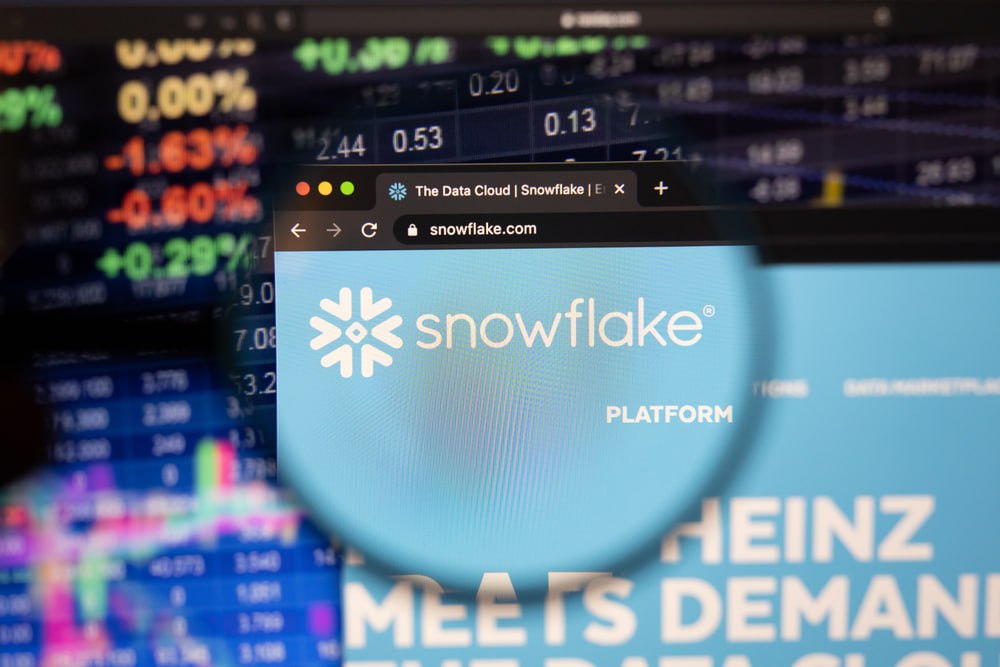Snowflake (SNOW) is an enterprise software company specializing in business analytics. It burst into the market with a highly publicized Initial public offering (IPO) in September 2020, making it a household name among investors.
However, SNOW stock journey hasn’t been a smooth ride. While many rushed to buy its shares during the IPO frenzy, they soon found themselves holding a heavy bag of stock certificates.

The IPO was priced at $120 per share, but when trading began, SNOW stock skyrocketed to $245. It reached its peak at $429 in December 2020 before experiencing a drop to $184 in May 2021. The stock saw a final surge to $406 in November 2021, marking the peak of the hype cycle.
Interestingly, SNOW didn’t reach new highs in 2021, signalling a turning point for the stock. As of June 2022, the stock hit its lows at around $108 and has since been trading in a range-bound fashion, primarily between $120 and $190 per share. This presents an excellent opportunity for investors to enter the market.
Leveraging AI-powered tools to predict Snowflake price
In an effort to gain insight into Snowflake’s potential price trajectory for the upcoming year, Finbold has harnessed quantitative analysis and AI algorithms for forecasting.
As forecasted by the AI-powered prediction tool, it’s anticipated that the stock’s price will drop to $103.46 at the end of the year. If this prediction materializes, it would be around a 30% decline from the current price of the stock.
The significant drop in value provides a compelling opportunity for investors to enter the market and initiate a dollar-cost averaging strategy. This strategy involves investing a fixed amount of money at regular intervals, with the additional tactic of allocating more funds when the price experiences a drop of 7 to 10%. This approach can help investors mitigate risks and potentially achieve better long-term returns.
Based on predictions generated by the AI-powered tool CoinCodex, Snowflake shares are anticipated to reach $225.15 in a year’s time, as per data retrieved on October 22th. This projection represents approximately a 54.2% increase compared to Snowflake’s stock price of $103.46.
When delving into the shorter term, the algorithms suggest that Snowflake could reach around $194.20 at the beginning of next year. Such an outcome would signify a noteworthy 26% increase within the span of four months.
Skilled investors look for opportunities when stocks are undervalued and have the potential for growth. Snowflake, despite its ups and downs, presents an excellent opportunity for those with a long-term investment perspective. It’s during these times of uncertainty that investors can often find hidden gems and potentially benefit from their future growth.
Technical analysis and company’s fundamentals
The company has been experiencing a slowdown in recognized revenue growth, dropping from over 100% year-on-year (YoY) in the January 2022 quarter to just 36% YoY in the July 2023 quarter. The trailing twelve-month (TTM) revenue growth has also decreased to 49%.
SNOW’s gross margin has increased slightly, reaching 66% on a TTM basis, up from around 60% at the time of its IPO. While this is relatively low for a software company, it reflects the expenses associated with hosting a ‘data lake’ model with third-party cloud vendors.
The company’s EBITDA margins, which were significantly negative at the time of its IPO, have improved to +5% on a TTM basis lately. However, TTM EBITDA didn’t show improvement in the July 2023 quarter, marking the first time it hasn’t increased since the IPO.
In terms of cashflow, SNOW’s balance sheet boasts a substantial amount of net cash, with around $3.8 billion in cash and short-term investments and no debt.
While SNOW demonstrates good cashflow margins, with TTM unlevered pretax free cashflow margins of +16%, indicating a strong position in its supply chain, the recent quarters have shown a decline in these metrics.
SNOW holds a substantial amount of remaining performance obligations (RPO), equivalent to 1.4 times TTM revenue. However, the growth in the order book has decelerated. It was down 8% sequentially from January to April and then up just 3% sequentially into the July quarter.
There is a potential for SNOW stock to rebound, as suggested by the stock chart below. The volume x price profile indicates a period of institutional accumulation since April 2022. This is characterized by high-volume trading within a rangebound price action. While there are no guarantees, this pattern is often indicative of long-term investors gradually building positions in the stock.
SNOW may see further upside potential, especially in the $110-$170 range, with lower risk in the $130-$170 zone. However, trading above $170 might signal a move into a ‘Markup’ zone, which could attract latecomers. The extent of the rebound will depend on various factors, including improvements in company fundamentals and overall market sentiment.
While Snowflake is a relatively new company and may experience price volatility, its strong fundamentals and business model make it an appealing long-term investment. The key is to buy when the stock is undervalued and hold for the potential returns in the future. Investing in Snowflake at its low points and capitalizing on its future potential growth is a sound investment strategy.
Buy stocks now with Interactive Brokers – the most advanced investment platform
Disclaimer: The content on this site should not be considered investment advice. Investing is speculative. When investing, your capital is at risk.








